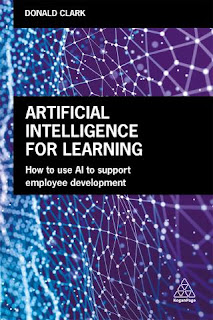
AI and learning is about to get a massive boost
Author: Donald Clark
Source
While ChatGPT has become a global meme, it actually distracts from the many other uses of AI for learning outlined in my book ‘AI for Learning’. This includes uses that lie unseen and invisible, such as AI being the new UI, text to speech, speech to text, translation, adaptive learning, learner support, assessment and spaced practice. Duolingo with its superbly smart algorithms and massive data sets is quietly revolutionising language learning. It is, in essence, an AI company. Of course, the best digital technology is usually invisible.
But another invisible technology is being worked on that will have a huge impact on the learning world – SEMANTIC SEARCH. We have been using this and it is astonishingly powerful. At the moment search is keyword driven and often misfires. Google has become dominant as it uses vast amounts of user data to hone its battery of search techniques, and to be honest, it is pretty good. However, it is not good at searching the motherlode of unstructured data in documents, social platforms, online courses, web pages, PowerPoints and videos you have in your organisation or personal data.
Learning technology has recently taken a lurch away from the supply-led LMS, a repository of content and courses, towards the demand-led LXP, which delivers to real needs. Recognising that you actually learn by doing, in the flow of work, you find exactly what you need at that moment, in that context. Performance support has become a big deal.
Enter ‘semantic search’ that uses transformers, similar to GPT. It solves an old problem, called the ‘lexical gap’, where search can’t locate co-located meaning. Traditional search matches exact targets, not a range of similar or related targets, so you get lots of misfires. When you turn language into mathematical vectors in a transformer, you capture a word or sentence’s relationship to other words, a bit like family resemblance (a useful metaphorical concept used by Wittgenstein) where words have fathers, mothers, sisters, brother cousins and so on, you can then match the ‘intent’ of the person who searches, more accurately with its intended targets.
At the moment this works well with documents up to a certain word limit but rapid progress is being made. Being able to find exactly what you need at any point from within your own organisation’s or personal data, will be a huge leap in functionality. It will transform performance support. It will also move beyond text to searching for images, diagrams and video clips.
We will be able to get what we need pulled by search or pushed using algorithmic techniques that embody optimal and personalised pedagogy to you as a learner. In many ways ChatGPT gives us a glimpse into semantic search, as it uses some of these semantic techniques. This is only one of many AI techniques that will hit the learning world. It truly is the technology of the age.
